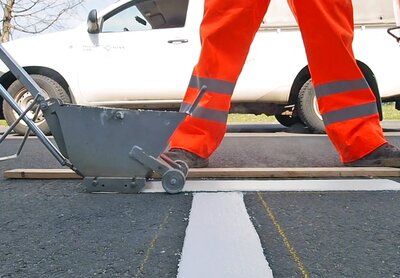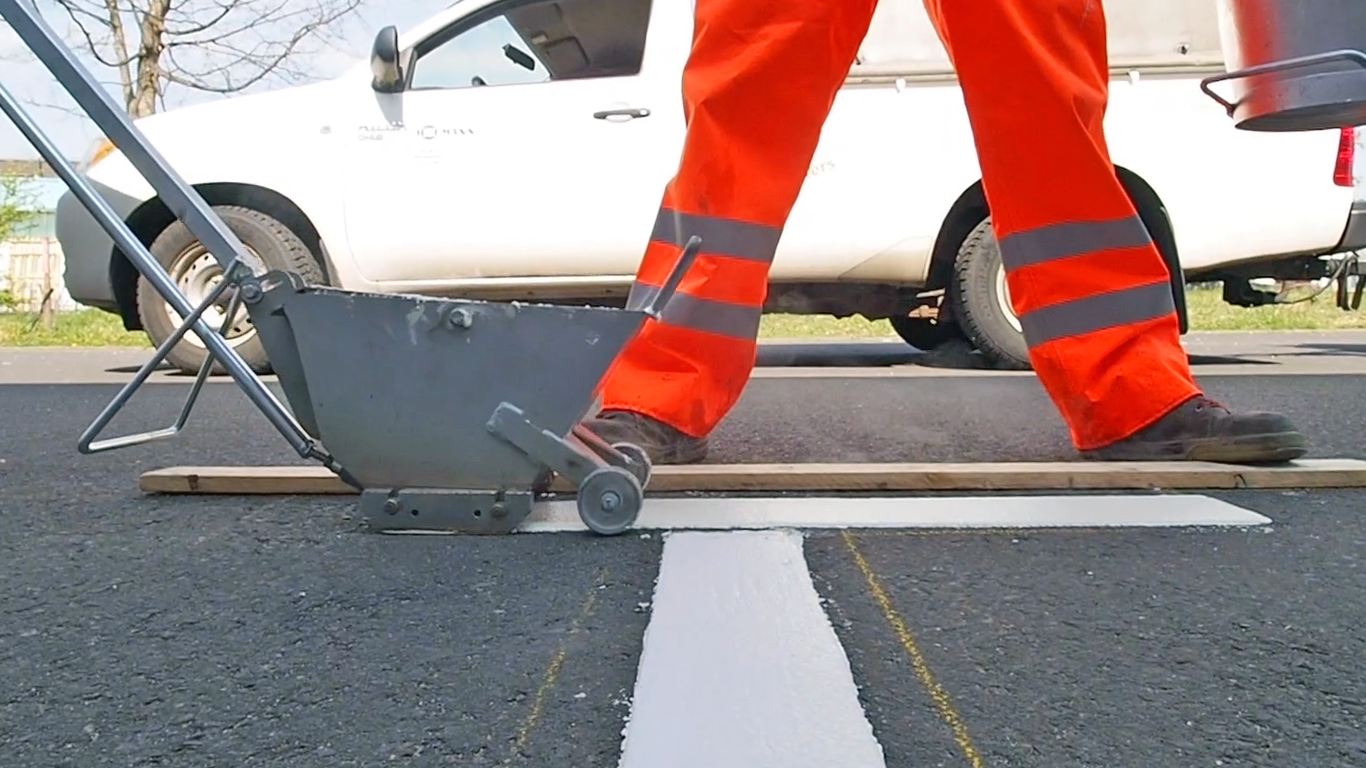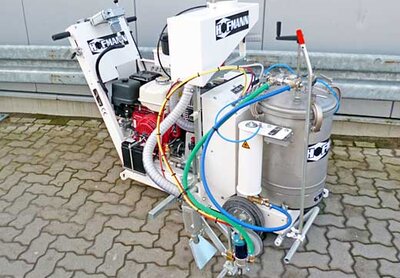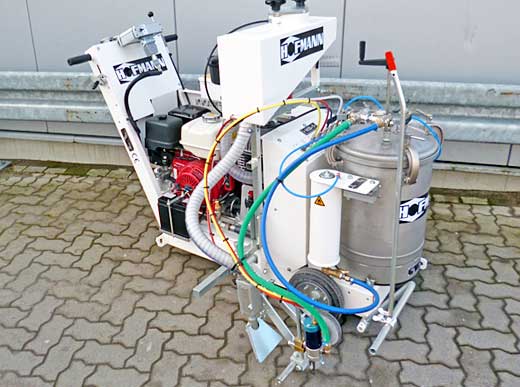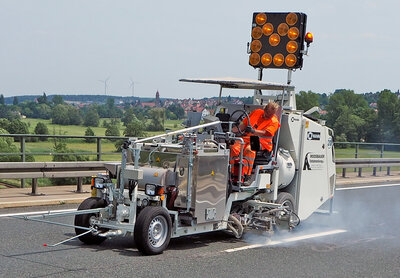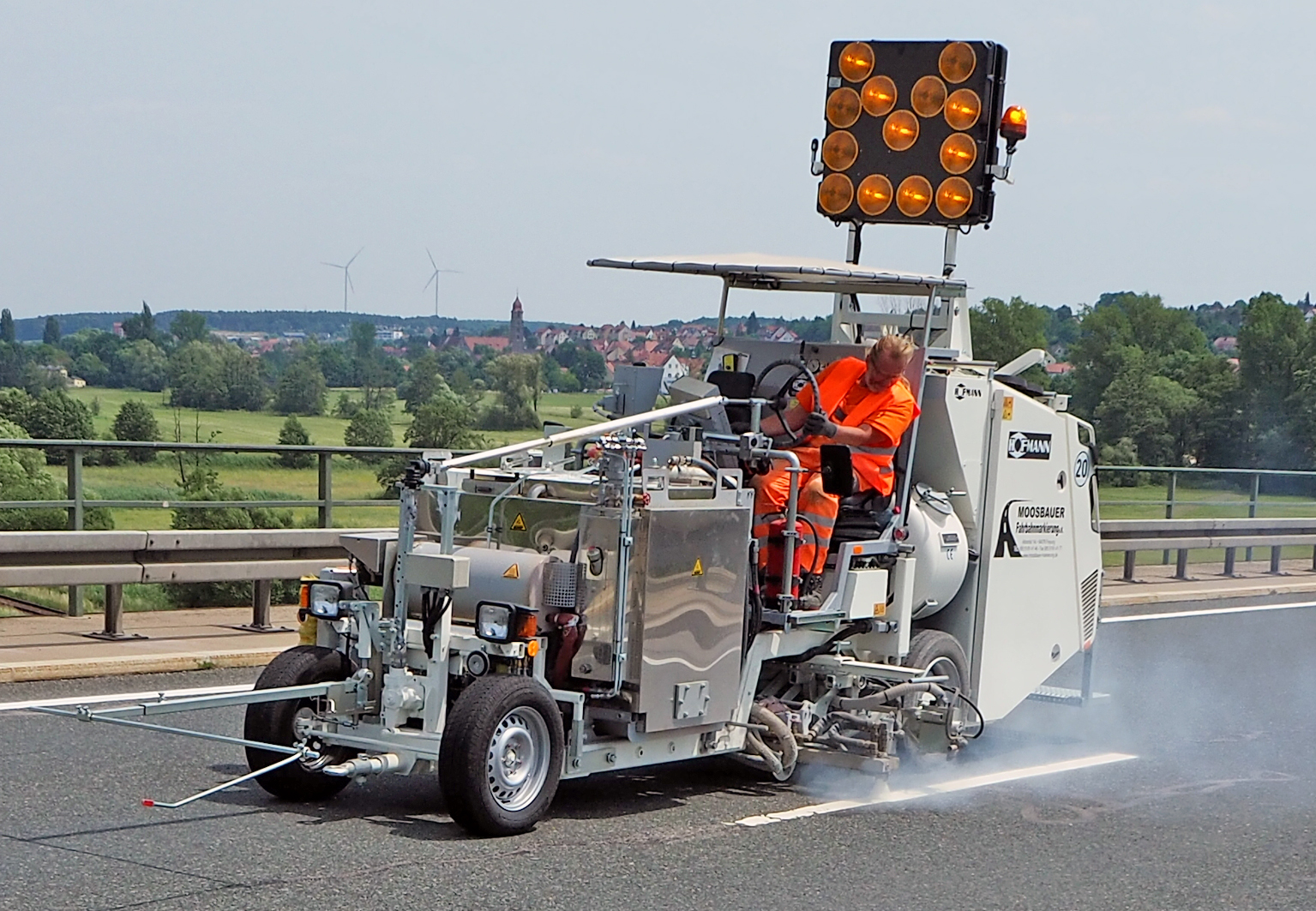Types of road markings
Road markings: an important tool for traffic control. They tell us where the road starts and ends, where we are allowed to overtake and where we aren't. However, we must be aware that the markings are not the same everywhere. Remember the principle:
Different countries, different lines
The meaning and use of road markings are not regulated internationally. This means that their shapes, colours, and standards differ. In order to live up to these great variations, machines must be able to cover a broad range of markings. Only this can ensure that pedestrians, motorists, cyclists, and other road users can find reliable orientation in road traffic.
Types of lines
Continuous lines Double line Bicoloured lines Yellow lines Diagonal lines
Five types of road markings
Continuous lines: the many variations make it impossible to define a consistent standard. However, these lines are typically continuous, 10-15 cm wide, and unicoloured. They are often used as lane boundaries and separations. They often mark parking spaces on private premises. Any road marking machine with, e.g., a simple spray gun, is able to apply a continuous line.
Double line: this type of line is often used to separate traffic flows in road traffic. This means that it is typically found in the middle of the road. The following double line versions exist:
- Two continuous lines
- One continuous marking in parallel to an interrupted line
- Zip lines at airports
The most efficient solution in this case is using a marking machine that has, for example, two spray guns. However, application with, e.g., a single spray gun is also possible. It is very time-consuming, however.
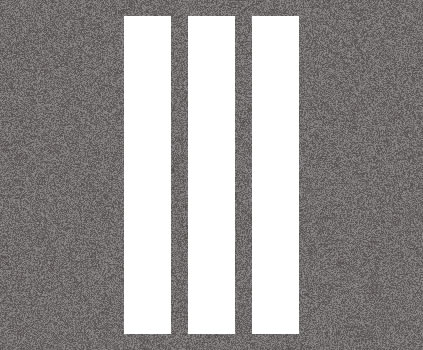
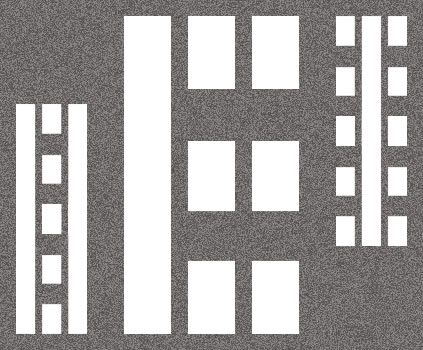
Bicoloured lines: this kind of marking is relatively rare in the EU but can be found at construction sites here and there. This is the case where a yellow temporary line merges into a permanent white line. On airport runways, two-coloured lines increase contrast to the light concrete colour. There are several options for applying this kind of line. The first one is using a marking machine with, e.g., a single spray gun. However, this entails a waiting time since one colour needs to dry before the second one can be applied. It is more efficient to apply the colour with, e.g., two spray guns in order to avoid waiting times.
Yellow lines: yellow shows that the line is a temporary version that marks a traffic peculiarity. Yellow lines are frequently found near construction sites. They can be applied by the same principle as white ones and occur in different types.
Diagonal lines: diagonal lines are used to reflect that an area is blocked for road traffic. They are continous lines applied at a specific angle and in a specific pattern to produce a striped area.
Standards and directives
Nearly all of these markings are subject to standards and directives. The thin version of the interrupted line marking on motorways, for example, must be 15 cm wide. On other roads, it is 12 cm wide. Thick line markings are 30 cm wide on motorways and 25 cm wide on conventional streets. The marking distance within a broken line is also standardised. In Germany, it is 1:2. Directives often differ considerably between countries. For example, German motorways have 6-m-long lines for the guiding lines, at distances of 12 m. In England, in contrast, they are only 2 m long, while the distance is 7 m. The imperial system in the USA in turn leads to lines that are 3.1 m long and are placed at distances of 9.1 m.

